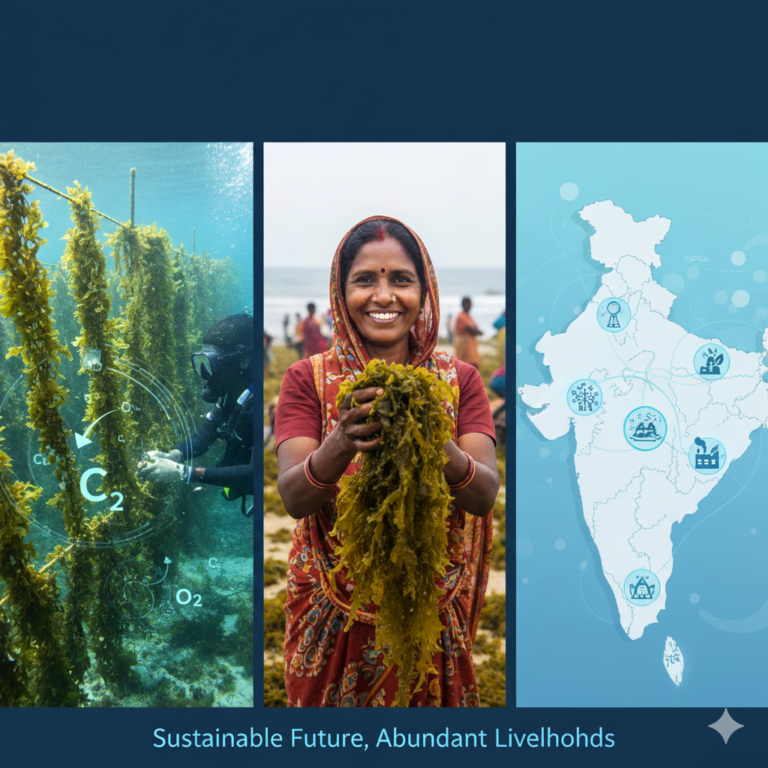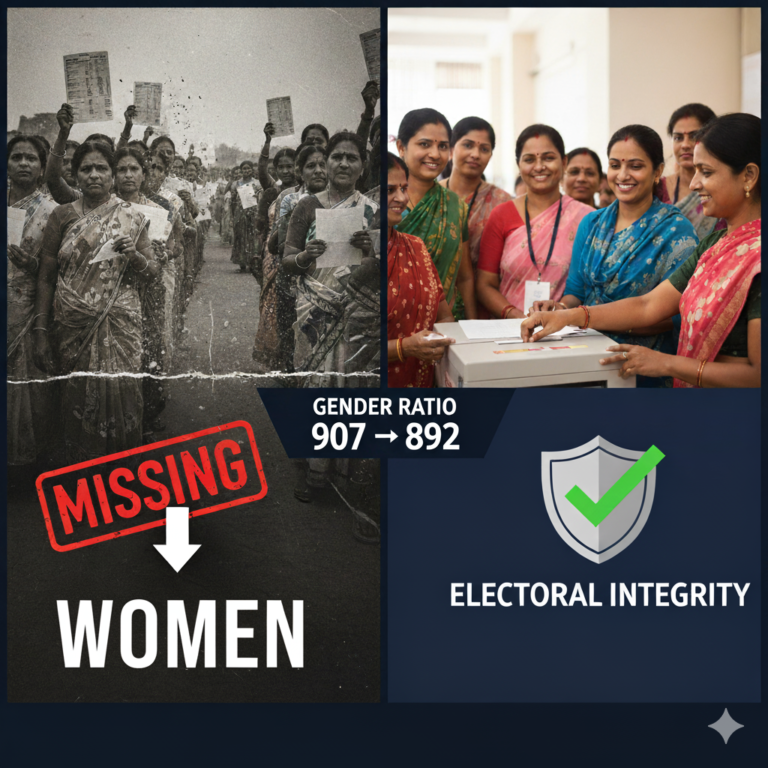Introduction
India stands at a crucial juncture in its development journey. While it is projected to reap the benefits of its demographic dividend until 2040, this advantage is under serious threat from the rising burden of Non-Communicable Diseases (NCDs). These include cardiovascular diseases, diabetes, cancers, and chronic respiratory illnesses, which now account for over 60% of all deaths in India (WHO, 2023). Alarmingly, nearly one-fourth of these deaths occur prematurely between ages 30–69. downtoearth
This silent epidemic not only erodes public health but also directly impacts economic productivity, healthcare costs, and social equity, making it a major challenge for India’s sustainable growth.
Epidemiology and Key Drivers
India’s NCD Landscape
- NCD deaths rose from 37.9% in 1990 to 61.8% in 2016 (IHME, Global Burden of Disease Study).
- Diabetes: ~9.3% prevalence among adults aged 18–69; 24.5% have impaired fasting glucose (ICMR, 2021).
- Hypertension: affects ~35.5% of adults (ICMR-NCDIR, 2022).
- Premature mortality: 24.4% probability of dying from major NCDs before age 70 (WHO, 2022).
Drivers of the Crisis
- Lifestyle shifts: Sedentary behaviour, calorie-dense diets, rising stress levels.
- Pollution: India has 14 of the world’s 20 most polluted cities; air pollution contributes to 1.67 million deaths annually (Lancet Planetary Health, 2020).
- Substance use: ~28.6% of adults use tobacco, both smoked and smokeless (NFHS-5, 2019–21).
- Socio-economic inequalities: Urban slums and rural poor face the double burden of malnutrition and NCDs.
Analysis
Health System and Policy Gaps
Despite schemes such as the National Programme for Prevention & Control of Cancer, Diabetes, Cardiovascular Diseases and Stroke (NPCDCS), gaps remain:
- Preventive focus is weak: Limited investment in mass awareness, dietary regulations, and school-based activity promotion.
- Infrastructure deficit: Just 6,000+ NCD clinics at CHC/PHC level for a population of 1.4 billion; rural access remains patchy (MoHFW, 2022).
- Financial burden: Out-of-pocket health expenditure in India is 48.2% (NHA, 2021); 6–8% of households fall into poverty annually due to healthcare costs.
- Data gaps: Limited national data on multi-morbidity, regional disparities, and implementation outcomes.
Socio-Economic and Environmental Linkages
- Economic Impact: Every 10% rise in NCD mortality correlates with a 0.5% reduction in GDP (World Bank, 2020), due to productivity loss and healthcare spending.
- Demographics: India’s working-age cohort (15–59) is projected to peak by 2040. Rising NCDs could convert this dividend into a liability.
- Environmental nexus: Pollution, poor urban design, and climate change intensify chronic respiratory and cardiovascular risks.
=Thailand successfully reduced smoking prevalence by 21% through sustained tobacco taxation and public awareness. Japan mandates annual school health checks to catch risks early—India can learn from such models.
Global Frameworks and India’s Commitments
- India is a signatory to WHO’s Global Action Plan for NCDs (2013–2030), which targets a 25% reduction in premature mortality by 2025. Current projections suggest only ~13.9% reduction—falling short.
- SDG 3.4: Calls for a one-third reduction in premature NCD deaths by 2030. Achieving this requires accelerated action.
Way Forward
1. Strengthen Preventive Interventions
- Expand school-based physical activity and nutrition awareness.
- Fiscal tools: Higher tobacco/alcohol taxation, sugar-sweetened beverage tax (similar to Mexico’s model).
- Implement front-of-pack food labeling (FSSAI).
2. Enhance Primary Healthcare Capacity
- Scale up Health and Wellness Centres under Ayushman Bharat for universal NCD screening.
- Train ASHAs/ANMs in counselling, lifestyle guidance, and follow-up.
3. Ensure Financial Protection
- Integrate NCD services under Ayushman Bharat – PMJAY.
- Subsidize essential drugs and fixed-dose combinations at PHCs.
4. Foster Multi-Sectoral Collaboration
- Urban planning: Walkable cities, cycling lanes, green spaces.
- Education & media: Drive behaviour change campaigns.
5. Strengthen Data & Research
- Invest in implementation research (e.g., Tamil Nadu’s “Makkalai Thedi Maruthuvam” doorstep health initiative).
- Map regional and socio-economic disparities for targeted interventions.
Conclusion
The rising tide of Non-Communicable Diseases is one of the greatest threats to India’s health, economy, and demographic dividend. Without urgent corrective action, the nation risks losing its growth advantage. Bridging preventive policy gaps, strengthening primary healthcare, ensuring equity, and adopting multi-sectoral approaches are critical for reversing current trends.
India’s challenge is not just medical—it is social, economic, and ethical. The coming decade will determine whether India turns its demographic dividend into a development disaster or a sustainable growth story.
Key Highlights
- NCDs account for >60% of deaths; 24% premature (ages 30–69).
- Double burden: Rising lifestyle diseases + persisting undernutrition.
- GDP loss: +10% NCD mortality → –0.5% GDP growth.
- Policy gaps: Weak prevention, high OOP expenditure, limited PHC reach.
- Global framework: WHO target (25% reduction by 2025); India lagging.
- Way forward: Prevention, PHC, equity, fiscal tools, data systems.
UPSC Mains Questions:
- The growing burden of Non-Communicable Diseases threatens to derail India’s demographic dividend. Discuss with reference to healthcare policy and socio-economic implications.
- Non-Communicable Diseases highlight the intersection of lifestyle, environment, and governance. Critically examine India’s preparedness.
- Discuss the role of multi-sectoral collaboration in achieving WHO’s Global Action Plan targets for NCD reduction in India.
- “Preventive focus in India’s NCD control programmes remains weak.” Analyse the reasons and propose strategies for strengthening preventive measures.









+ There are no comments
Add yours